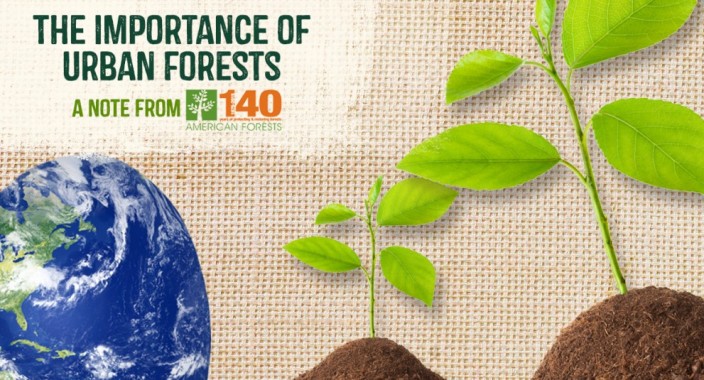The Importance of Urban Forests
April 17, 2015

Ian Leahy, Director of Urban Forest Programs at American Forests, helps develop innovative programs that help communities better improve and manage their urban forest assets over the long-term. He took the time to give us a rundown on Community ReLeaf, and the effect our Woodchuck campaign has had and will have on American Forests’ mission.
“It’s well established these days that forests are good for many reasons, but a fascinating body of new research has emerged that reveals a vast array of benefits the forest provides the more integrated it is into urban environments, in and around where people live.
Urban forests — meaning trees and green vegetation — not only increase property values, clean the air and prevent storm water pollution from reaching waterways, but also have deeper, more psychological benefits.
American Forests is the nation’s oldest national conservation organization and has been pioneering work in urban forestry since populations surged into cities during the industrial era. Today, we’re on the forefront of realizing a vision to create truly green towns and cities, from trees and gardens to green walls and roofs. Whether in a skyscraper canyon or bucolic town, people everywhere can and should reap the benefits of the urban forest in their daily lives.
It is for that reason that American Forests launched Community ReLeaf, a sister program to the Global ReLeaf initiative that Woodchuck Cider has supported by planting more than 47,000 trees in areas devastated by wildfire. Going forward, Woodchuck Cider will be partnering in our work in urban areas. Community ReLeaf works in cities selected each year through a national competitive proposal process. Using satellite imagery and specialized software, we start with a scientific analysis of the city’s tree canopy that assesses its structure, identifies potential planting locations and measures impact. For example, a recent study that focused on school zones in Atlanta found the city’s tree canopy removes an estimated 3.6 million pounds of air pollutants each year, a benefit valued at nearly $42 million annually. We also found fewer respiratory illnesses — and even fewer hospital admissions and mortalities — in areas with more tree canopy. You can tell a lot about a city by looking at its trees.
Once a scientific foundation is established, we then engage local residents and work with nonprofit and city partners to strategically plant trees where the study identifies that needs and opportunities are highest. When feasible, we design high-concept projects, such as a forthcoming outdoor exercise space in Miami, outdoor education spaces in Oakland and Detroit, and an urban farm and tree nursery with aquaponics and food trucks on three acres in Washington, D.C. This program also supports local policy initiatives to establish long-term management of the urban forest.
These projects are made possible by donations from businesses, individuals, and governments, as well as the gift of time and materials by volunteers. American Forests’ goal with Community ReLeaf is to use it as a laboratory to foster innovations, best practices, and diverse engagement, integrating urban forestry into other disciplines working on the forefront of urban design and restoration.”
Back to Blog